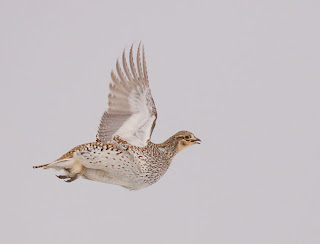Most of my time spent in Tanzania was at the Enduimet Wildlife Management Area (WMA) on the northwest flanks of Kilimanjaro. Enduimet is a southern extension of the Amboseli region in Kenya and much of the WMA is a broad plain between Mount Meru to the south, Kilimanjaro to the east southeast, and Longido to the northwest. This plain gently slopes towards Kenya and is mostly an acacia savanna landscape. The WMA functions as a connection for wildlife moving between the Amboseli system and Kilimanjaro National Park, Arusha National Park and other protected areas to the southwest. I was fortunate to take a couple of trips into the heart of the WMA and I was able to observe a wide range of African wildlife. In future posts I will describe other wildlife I encountered in the WMA, the history of the WMA and what exactly I was doing there but for right now I am going to begin with the large mammals we found during our explorations.
Near the border with Kenya, at the lowest elevation of the WMA, the water table is closer to the surface and supports larger trees than much of the rest of the WMA. There is also an old meerschaum (a magnesium rich clay often used to make smoking pipe bowls) mine near the border where old mine pits now have surface water. Most of the wildlife in the WMA is found near these old pits during the dry season since it is the only source of reliable water in the area. Particularly since much of the water that comes from the mountain slopes is now diverted for human use before it ever reaches the upper stretches of the WMA.

We found lots of zebras (punda milia in Swahili). I love the stripes and could have spent a lot of time just watching these guys.


We also had a small bunch of zebras near the lodge that would come to water at the small concrete lined pond at the main lodge.


I also enjoying seeing the Masai giraffes (ok I really enjoyed all the animals I was able to observe!) We saw many twigas throughout the WMA.





The pattern on this bull giraffe was a bit different than most of the others I saw, with the centers of the brown patches becoming quite dark.

The was another gnu species for me. We saw many Wildebeast (Nyumbu), again mostly at the lower end of the WMA towards Kenya.


We didn't see any elephants (Tembo) during the first trip through the WMA, but on the second tour through we found a couple foraging in the trees.

We saw a small group of Bat-eared Foxes but they were quite shy and didn't allow for a very close approach.

One afternoon I has some free time and went for a short hike around the lodge. I wound up sitting on a small outcrop above the next drainage to the north and watched for a bit. After I had been there for a short while I saw a female Lesser Kudu emerge from the bush and slowly make her way up the drainage towards me. She was soon followed by a few other female and young as well as this bull.

I managed to sneak up pretty close to the group and got this photo of one of the females. When I tried to shift a bit to get a clearer view she spotted me and was gone.

There were lots of Grant's Gazelles, Thompson's Gazelles, and Impala in the WMA. This male Grant's Gazelle sported one of the largest sets of horns that we saw in the WMA.

I couldn't let this post go without at least one bird photo but it is pretty close to a large mammal. We found a few Kori Bustards in the WMA. These are purportedly the heaviest flying bird in the world and although I never saw one fly, the certainly did look quite hefty on the ground.

































